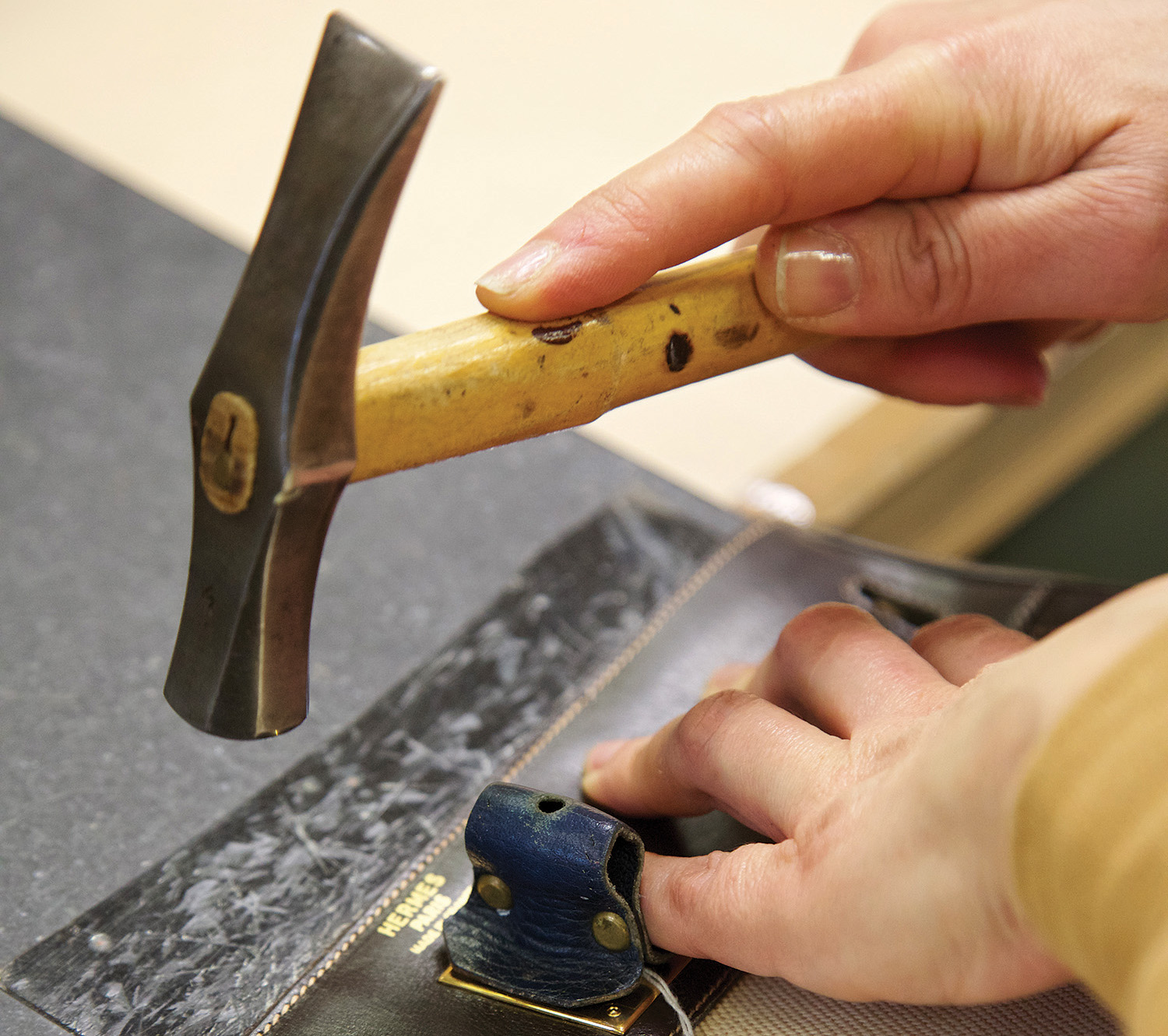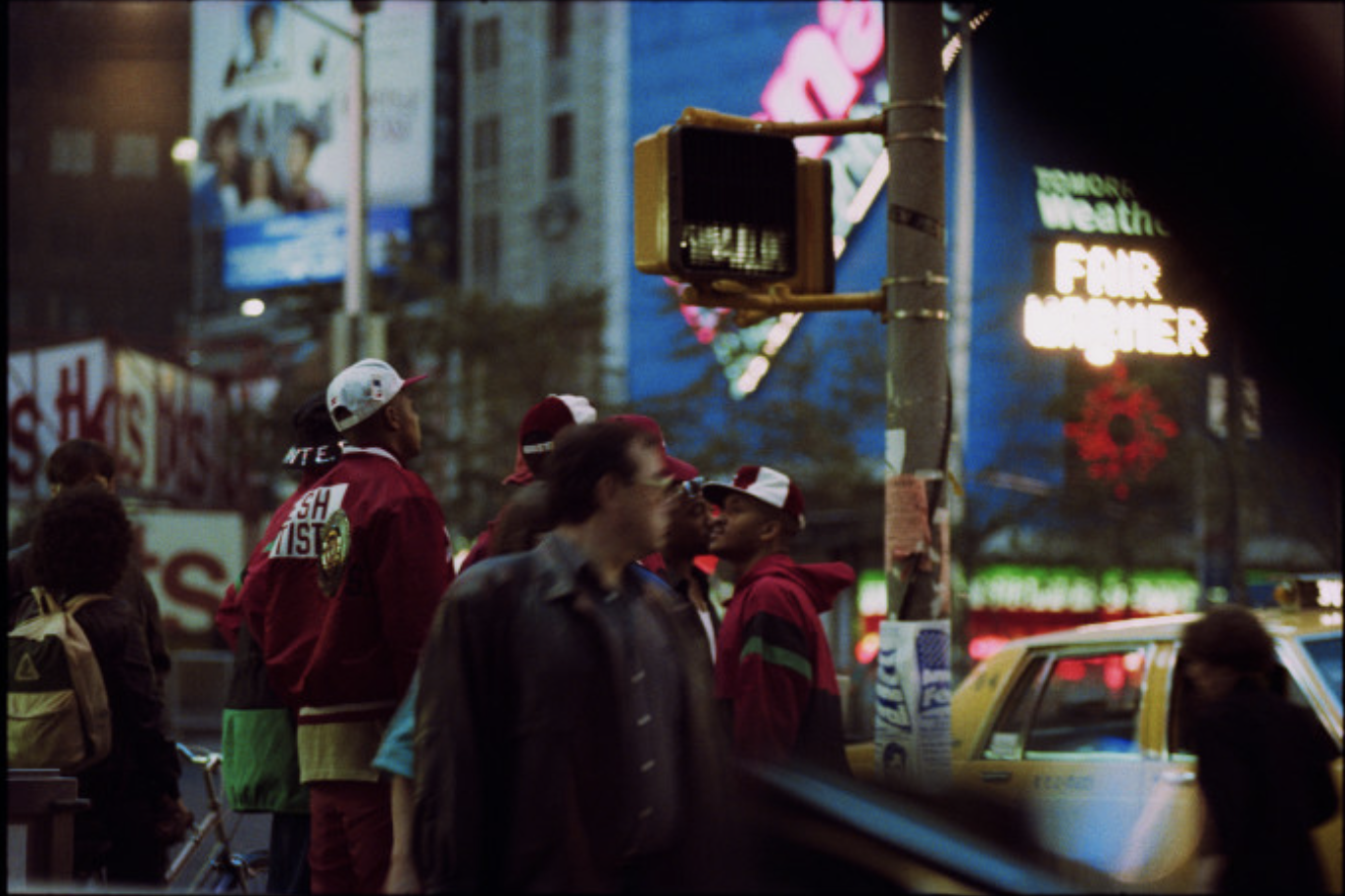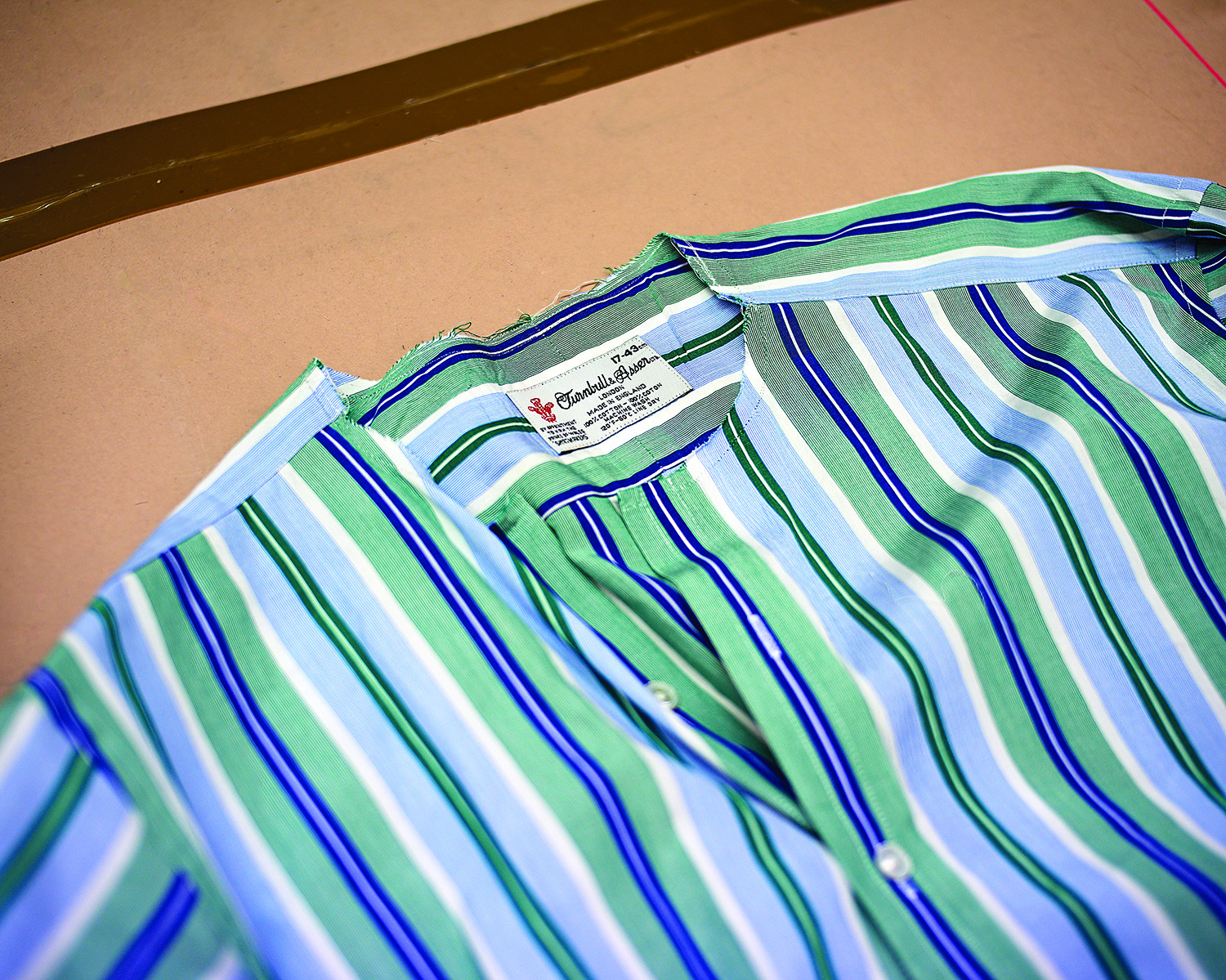
Time For Rehab — Luxury Repairs Are On The Rise
Some brands are dedicated to giving their products a new lease of life.
Related articles
Here’s the scene: you’ve invested in a double-faced cashmere topcoat from Brunello Cucinelli, an exemplar of sartorial finesse that cost you some $13,000. Basking in its glory as you head into the office, you’re bounding through the lobby when tragedy strikes by way of your flat white cascading down the coat’s front. You dab away, but the damage has been done.
What is there to do? You can try your luck with a trip to the dry cleaner, though there’s no guarantee they’ll be able to erase the notoriously stubborn stains. And with cashmere this fine, a chemical bath might do more harm than good. It can hang in shame at the back of your closet or woefully be given up for donation. Or it can be sent to the Brunello Cucinelli centre for fashion resuscitation.
Cucinelli is just one of a growing number of brands committed to ensuring the longevity of their products, come coffee, moths or years of wear and tear. While producing pieces of the highest quality—implicitly built to withstand the weathering of time—is a given with any luxury purveyor, some are doubling down on that assurance and putting their seamstresses where their mouths are. Having assembled teams dedicated to restoring past-their-prime wares, these brands are encouraging customers to send in their wizened duds rather than simply replace them, demonstrating not only resounding confidence in their products but also a dedication to sustainability that is becoming increasingly relevant.
“Beyond a practical choice, it is also an ethical one,” says Cucinelli, who has made repairs a feature of his company since the very beginning. “I come from a culture of farmers, and growing up, we had a truly humble life. We couldn’t simply throw things out. This stayed with me.” After launching with cashmere knits in 1978, Cucinelli established a riparazioni department to accommodate customers whose sweaters had fallen prey to moths, a fairly common issue that requires intricate re-weaving beyond the abilities of the average local seamstress.
The service grew alongside his product offerings and is now a stand-alone building at his Italian headquarters, handling everything from weaving and knitting to re-lining blazers and re-soling shoes. Perhaps most remarkably—and unique to Cucinelli—all of these services are performed at no cost to the customer.
“We like to think that this is a sort of lifetime guarantee for our clients,” Cucinelli says. While the service has been available for decades, he says the past few years have seen notable growth. In 2019, the company estimates it performed 5,000 repairs for its global clientele.
For Cucinelli, it’s more than just a thoughtful customer service; it’s a reflection of his brand’s ethos. “Italian design focuses on a timeless trait that makes you want to wear your pieces year after year,” he says. “Sustainability can be achieved in several ways, but I think timeless design is essential to this goal.”
According to a McKinsey report, The State of Fashion 2019, the average person buys 60 percent more clothing than they did 15 years ago—but keeps that clothing for half as long as they used to. Much of the conversation around sustainable fashion has focused on eco-friendly materials, but luxury brands, in particular, are broadening the scope.
No amount of organic seersucker or plastic bottles reborn as parkas can change the fact that 73 percent of the world’s clothing materials wind up in landfills or in flames (85 percent in the
US). Fashion’s sustainability problem isn’t what it’s making; it’s widespread overproduction, teamed with consumers’ perception of clothing as disposable.
That’s one reason that Kering recently expanded the parameters of its Environmental Profit & Loss measure for its brands, which include such powerhouses as Gucci and Bottega Veneta. The luxury conglomerate is using data from an extensive consumer survey to calculate the environmental impact and financial implications of how shoppers care for and eventually discard products. Many brands have examined their choices during the production process—water and carbon used, toxins generated—but a look at the life of a product after its sale paints a more accurate picture of a company’s environmental footprint.
While we may not be facing the austerity that inspired England’s World War II campaign to “Make Do and Mend”, current events—from the pandemic to global warming—have made conscientious consumption a priority for a wide swathe of shoppers. Luxury brands that give their time-worn products a new lease of life are meeting the moment on two fronts: lightening their toll on the environment and providing products designed to retain their appeal over time.
The latter tenet is central to Hermès. Like Cucinelli, it eschews fashion trends in favour of haute craftsmanship and enduring design. When asked the company’s single most defining trait, Robert Dumas, the brand’s former CEO and artistic director, once advised an heir: “Hermès is different because we are making a product that we can repair.” The company’s collection includes more than 50,000 products—from luggage and teacups to suits and silk scarves—so rehabilitating everything that is sold in a little, or large, orange box is a considerable undertaking.
Hermès employs a team of 78 repair specialists at 14 ateliers throughout Europe, Asia and the United States. Last year, they received close to 100,000 requests, and the demand is so great
that Hermès is opening an additional workshop. While many of the requests are for bags, luggage and accessories, the damage-repair crew offers 700 different services. And in case you’re doubting whether that frayed tie merits their expert restoration, know that company policy is to examine every Hermès product, no matter how small, old, battered or not.
Paul Stuart has a staff of tailors on-site at each of its stores—the Madison Avenue flagship has a full-floor workshop with a team of 22—which allows for a speedy turnaround. CEO Paulette Garafalo says it’s not uncommon for men to come in with trousers that need adjusting or even a shirt that needs pressing before a big event. Most often, though, the tailors are working their magic on suits to accommodate inches lost or gained. If it’s something the in-house team can’t address—say, a Scottish cashmere sweater or an Italian nubuck belt—they’ll send it back to the factory to be revived. As Garafalo says: “It’s the essence of what we do, providing our customer with the very best—pieces that they’ll have for a very long time.”
Darning socks and patching seams have typically carried an association with hard times. Why fuss? You can afford a new one. But the increased interest in repairs among luxury consumers is proving that attitude is changing. In reality, repairs have been a secret weapon of savvy shoppers for decades. In his book Elegance, menswear historian Bruce Boyer quotes John D. Rockefeller III’s tailor at bygone Pec & Company: “Every couple of years he’d bring in his old shirts to be reconditioned. I put on new collars and cuffs and … patch a hole or something, and he’d get another five years out of them. Then back he’d come again with the shirts for the same treatment. That way he’d get fifteen or twenty years out of a shirt.”
That kind of thriftiness is just smart: if you invest in the best, why not get your money’s worth? And this re-collaring and re-cuffing service has long been a part of Turnbull & Asser, which keeps an archive of fabric offcuts from its bespoke shirts precisely for this purpose. Even for ready-made shirts, the company will do its best to match the fabric—trickier than it may sound, since colours can fade—or, at the very least, refurbish a shirt with a contrasting white collar and cuffs.
Some brands are going one step further and selling rehabilitated goods as collectibles unto themselves. After noticing the appetite for vintage Mark Cross products on the secondary market, CEO Ulrik Garde Due saw potential for new business. “Why should we be giving the vintage resale opportunity to third parties?” he says. “We represent future vintage. Meaning when you buy a Mark Cross product, it is long-lasting, and from a design point of view, it’s never going out of fashion. Let’s take ownership of this ourselves.”
The brand, which celebrates its 175th anniversary this year, began buying up vintage pieces in 2019, from attachés to opera glasses and rugby balls. Many of its vintage offerings now come from existing clients who trade in their old wares. A team assesses each piece and, if deemed worthy of resale, buys it back; then the firm either keeps it for the archives or puts it up for sale after repairing it (a service that is available for all Mark Cross products, regardless of whether owners want to off-load them).
“We have a solid group of existing customers buying vintage as well as new products, and we’re also seeing a completely new customer specifically for vintage. Young consumers and older consumers,” Garde Due says of the vintage collection’s broad appeal. “You can feel good about continuing the eco-cycle of a product. We are seeing an acceleration in the consumer’s antipathy towards the waste-producing model in the fashion and luxury world.”
French shoemaker J. M. Weston, too, is turning the scuffs and stains of its products’ past lives into a selling point. The dedicated repairs workshop at its Limoges headquarters fixes up or entirely rebuilds about 10,000 pairs of shoes each year. Expanding on that service, the brand decided to offer customers the option of trading in their tired kicks to be resold. Weston Vintage, which debuted earlier this year, accepts old shoes at any Weston boutique, where they’ll either be exchanged for store credit or, if they aren’t quite up to snuff, get a complimentary shine. Those that are bought are sent for refurbishing before heading back to the sales floor, in either one store in Japan or two in France. And just like that, the circle of sartorial life continues.
This piece comes from the new Spring Issue – on sale now. Get your copy or subscribe here, or stay up to speed on all things with Robb Report’s weekly luxury insights.
Subscribe to the Newsletter
Recommended for you
6 Movies That All Style-Obsessed Guys Should Watch, From ‘Miami Vice’ to ‘After Hours’
Style writer David Coggins on Hollywood’s best under-the-radar menswear inspirations.
May 1, 2024
Shifting into Neutral This Season
How to Rock a Neutral Selection of Menswear This Autumn.
By Zeb Daemen
April 22, 2024
You may also like.
You may also like.
8 Fascinating Facts You Didn’t Know About Aston Martin
The British sports car company is most famous as the vehicle of choice for James Bond, but Aston Martin has an interesting history beyond 007.
Aston Martin will forever be associated with James Bond, ever since everyone’s favourite spy took delivery of his signature silver DB5 in the 1964 film Goldfinger. But there’s a lot more to the history of this famed British sports car brand beyond its association with the fictional British Secret Service agent.
Let’s dive into the long and colourful history of Aston Martin.
You may also like.
What Venice’s New Tourist Tax Means for Your Next Trip
The Italian city will now charge visitors an entry fee during peak season.
Visiting the Floating City just got a bit more expensive.
Venice is officially the first metropolis in the world to start implementing a day-trip fee in an effort to help the Italian hot spot combat overtourism during peak season, The Associated Press reported. The new program, which went into effect, requires travellers to cough up roughly €5 (about $AUD8.50) per person before they can explore the city’s canals and historic sites. Back in January, Venice also announced that starting in June, it would cap the size of tourist groups to 25 people and prohibit loudspeakers in the city centre and the islands of Murano, Burano, and Torcello.
“We need to find a new balance between the tourists and residents,’ Simone Venturini, the city’s top tourism official, told AP News. “We need to safeguard the spaces of the residents, of course, and we need to discourage the arrival of day-trippers on some particular days.”
During this trial phase, the fee only applies to the 29 days deemed the busiest—between April 25 and July 14—and tickets will remain valid from 8:30 am to 4 pm. Visitors under 14 years of age will be allowed in free of charge in addition to guests with hotel reservations. However, the latter must apply online beforehand to request an exemption. Day-trippers can also pre-pay for tickets online via the city’s official tourism site or snap them up in person at the Santa Lucia train station.
“With courage and great humility, we are introducing this system because we want to give a future to Venice and leave this heritage of humanity to future generations,” Venice Mayor Luigi Brugnaro said in a statement on X (formerly known as Twitter) regarding the city’s much-talked-about entry fee.
Despite the mayor’s backing, it’s apparent that residents weren’t totally pleased with the program. The regulation led to protests and riots outside of the train station, The Independent reported. “We are against this measure because it will do nothing to stop overtourism,” resident Cristina Romieri told the outlet. “Moreover, it is such a complex regulation with so many exceptions that it will also be difficult to enforce it.”
While Venice is the first city to carry out the new day-tripper fee, several other European locales have introduced or raised tourist taxes to fend off large crowds and boost the local economy. Most recently, Barcelona increased its city-wide tourist tax. Similarly, you’ll have to pay an extra “climate crisis resilience” tax if you plan on visiting Greece that will fund the country’s disaster recovery projects.
You may also like.
Omega Reveals a New Speedmaster Ahead of the Paris 2024 Olympics
Your first look at the new Speedmaster Chronoscope, designed in the colour theme of the Paris Olympics.
The starters are on the blocks, and with less than 100 days to go until the Paris 2024 Olympics, luxury Swiss watchmaker Omega was bound to release something spectacular to mark its bragging rights as the official timekeeper for the Summer Games. Enter the new 43mm Speedmaster Chronoscope, available in new colourways—gold, black, and white—in line with the colour theme of the Olympic Games in Paris this July.
So, what do we get in this nicely-wrapped, Olympics-inspired package? Technically, there are four new podium-worthy iterations of the iconic Speedmaster.

The new versions present handsomely in stainless steel or 18K Moonshine Gold—the brand’s proprietary yellow gold known for its enduring shine. The steel version has an anodised aluminium bezel and a stainless steel bracelet or vintage-inspired perforated leather strap. The Moonshine Gold iteration boasts a ceramic bezel; it will most likely appease Speedy collectors, particularly those with an affinity for Omega’s long-standing role as stewards of the Olympic Games.
Notably, each watch bears an attractive white opaline dial; the background to three dark grey timing scales in a 1940s “snail” design. Of course, this Speedmaster Chronoscope is special in its own right. For the most part, the overall look of the Speedmaster has remained true to its 1957 origins. This Speedmaster, however, adopts Omega’s Chronoscope design from 2021, including the storied tachymeter scale, along with a telemeter, and pulsometer scale—essentially, three different measurements on the wrist.
While the technical nature of this timepiece won’t interest some, others will revel in its theatrics. Turn over each timepiece, and instead of a transparent crystal caseback, there is a stamped medallion featuring a mirror-polished Paris 2024 logo, along with “Paris 2024” and the Olympic Rings—a subtle nod to this year’s games.
Powering this Olympiad offering—and ensuring the greatest level of accuracy—is the Co-Axial Master Chronometer Calibre 9908 and 9909, certified by METAS.

A Speedmaster to commemorate the Olympic Games was as sure a bet as Mondo Deplantis winning gold in the men’s pole vault—especially after Omega revealed its Olympic-edition Seamaster Diver 300m “Paris 2024” last year—but they delivered a great addition to the legacy collection, without gimmickry.
However, the all-gold Speedmaster is 85K at the top end of the scale, which is a lot of money for a watch of this stature. By comparison, the immaculate Speedmaster Moonshine gold with a sun-brushed green PVD “step” dial is 15K cheaper, albeit without the Chronoscope complications.
—
The Omega Speedmaster Chronoscope in stainless steel with a leather strap is priced at $15,725; stainless steel with steel bracelet at $16,275; 18k Moonshine Gold on leather strap $54,325; and 18k Moonshine Gold with matching gold bracelet $85,350, available at Omega boutiques now.
Discover the collection here
You may also like.
Here’s What Goes Into Making Jay-Z’s $1,800 Champagne
We put Armand de Brignac Blanc de Noirs Assemblage No. 4 under the microsope.
In our quest to locate the most exclusive and exciting wines for our readers, we usually ask the question, “How many bottles of this were made?” Often, we get a general response based on an annual average, although many Champagne houses simply respond, “We do not wish to communicate our quantities.” As far as we’re concerned, that’s pretty much like pleading the Fifth on the witness stand; yes, you’re not incriminating yourself, but anyone paying attention knows you’re probably guilty of something. In the case of some Champagne houses, that something is making a whole lot of bottles—millions of them—while creating an illusion of rarity.
We received the exact opposite reply regarding Armand de Brignac Blanc de Noirs Assemblage No. 4. Yasmin Allen, the company’s president and CEO, told us only 7,328 bottles would be released of this Pinot Noir offering. It’s good to know that with a sticker price of around $1,800, it’s highly limited, but it still makes one wonder what’s so exceptional about it.
Known by its nickname, Ace of Spades, for its distinctive and decorative metallic packaging, Armand de Brignac is owned by Louis Vuitton Moët Hennessy and Jay-Z and is produced by Champagne Cattier. Each bottle of Assemblage No. 4 is numbered; a small plate on the back reads “Assemblage Four, [X,XXX]/7,328, Disgorged: 20 April, 2023.” Prior to disgorgement, it spent seven years in the bottle on lees after primary fermentation mostly in stainless steel with a small amount in concrete. That’s the longest of the house’s Champagnes spent on the lees, but Allen says the winemaking team tasted along the way and would have disgorged earlier than planned if they’d felt the time was right.
Chef de cave, Alexandre Cattier, says the wine is sourced from some of the best Premier and Grand Cru Pinot Noir–producing villages in the Champagne region, including Chigny-les-Roses, Verzenay, Rilly-la-Montagne, Verzy, Ludes, Mailly-Champagne, and Ville-sur-Arce in the Aube département. This is considered a multi-vintage expression, using wine from a consecutive trio of vintages—2013, 2014, and 2015—to create an “intense and rich” blend. Seventy percent of the offering is from 2015 (hailed as one of the finest vintages in recent memory), with 15 percent each from the other two years.

This precisely crafted Champagne uses only the tête de cuvée juice, a highly selective extraction process. As Allen points out, “the winemakers solely take the first and freshest portion of the gentle cuvée grape press,” which assures that the finished wine will be the highest quality. Armand de Brignac used grapes from various sites and three different vintages so the final product would reflect the house signature style. This is the fourth release in a series that began with Assemblage No. 1. “Testing different levels of intensity of aromas with the balance of red and dark fruits has been a guiding principle between the Blanc de Noirs that followed,” Allen explains.
The CEO recommends allowing the Assemblage No. 4 to linger in your glass for a while, telling us, “Your palette will go on a journey, evolving from one incredible aroma to the next as the wine warms in your glass where it will open up to an extraordinary length.” We found it to have a gorgeous bouquet of raspberry and Mission fig with hints of river rock; as it opened, notes of toasted almond and just-baked brioche became noticeable. With striking acidity and a vein of minerality, it has luscious nectarine, passion fruit, candied orange peel, and red plum flavors with touches of beeswax and a whiff of baking spices on the enduring finish. We enjoyed our bottle with a roast chicken rubbed with butter and herbes de Provence and savored the final, extremely rare sip with a bit of Stilton. Unfortunately, the pairing possibilities are not infinite with this release; there are only 7,327 more ways to enjoy yours.
You may also like.
Bill Henson Show Opens at Roslyn Oxley9 Gallery
Dark, grainy and full of shadows Bill Henson’s latest show draws on 35 mm colour film shot in New York City in 1989.
Bill Henson is one of Australia’s best-known contemporary photographers. When a show by this calibre of artist opens here, the art world waits with bated breath to see what he will unveil.
This time, he presents a historically important landscape series that chronicles a time in New York City that no longer exists. It’s a nostalgic trip back in time, a nocturnal odyssey through the frenetic, neon-lit streets of a long-lost America.
Known for his chiaroscuro style, Henson’s cinematic photographs often transform his subject into ambiguous objects of beauty. This time round, the show presents a mysterious walk through the streets of Manhattan, evoking a seedy, yet beautiful vision of the city.


Relying on generative gaps, these landscapes result from Henson mining his archive of negatives and manipulating them to produce a finished print. Sometimes, they are composed by a principle of magnification, with Henson honing in on details, and sometimes, they are created through areas of black being expanded to make the scene more cinematic and foreboding. Like silence in a film or the pause in a pulse, the black suggests the things you can’t see.




Henson’s illustrious career has spanned four decades and was memorably marred by controversy over a series of nude adolescent photographs shown in 2008, which made him front-page news for weeks. This series of portraits made Henson the subject of a police investigation during which no offence was found.
In recent years, Henson has been a sharp critic of cancel culture, encouraging artists to contribute something that will have lasting value and add to the conversation, rather than tearing down the past.

His work deals with the liminal space between the mystical and the real, the seen and unseen, the boundary between youth and adulthood.
His famous Paris Opera Project, 1990-91, pictured above, is similarly intense as the current show, dwelling on the border between the painterly and the cinematic.
Bill Henson’s ‘The Liquid Night’ runs until 11 May 2024 at Roslyn Oxley9 Gallery.
Roslyn Oxley9 Gallery, 8 Soudan Ln, Paddington NSW; roslynoxley9.com.au



























